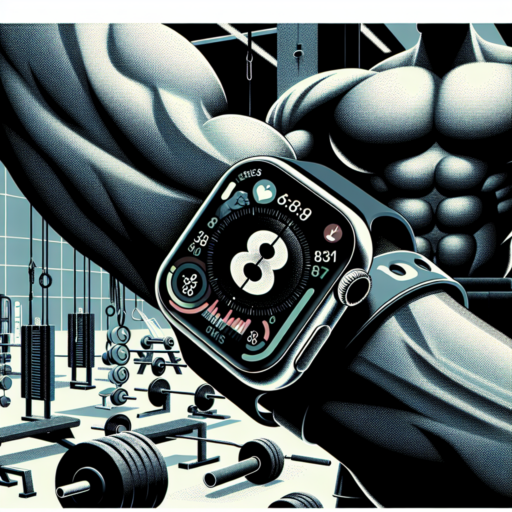What smart watches are waterproof?
In the burgeoning world of wearable technology, the demand for durable devices that can withstand elements such as water is high. Waterproof smartwatches have become a pivotal feature for sports enthusiasts, adventurers, and even the average user who desires protection against accidental spills or rain. This feature ensures that your investment is not only versatile across various activities but also resilient in diverse environments.
Diving Deeper into Waterproof Ratings
When exploring waterproof smartwatches, understanding the IP rating is crucial. This rating determines the level of resistance a device offers against the ingress of water. Watches may range from IP67, which guarantees protection in water up to 1 meter deep for 30 minutes, to IP68, which can handle deeper and longer submersions. Some devices even boast an ISO standard of 22810:2010, indicating suitability for swimming or other high-velocity water activities. Therefore, it’s essential to consider the specific requirements of your lifestyle when choosing the right model.
Renowned brands such as Apple, Samsung, Garmin, and Fitbit have made significant strides in integrating water resistance into their smartwatch designs. The Apple Watch Series, for example, not only offers an attractive design but also provides comprehensive water resistance, making it a top choice for swimmers and divers alike. Similarly, the Garmin Forerunner series is revered among athletes for its robust build and superior water-resistant capabilities, suitable for the most demanding aquatic exercises.
What is a true waterproof watch?
When it comes to defining a true waterproof watch, it’s imperative to understand the parameters that distinguish it from water-resistant counterparts. A truly waterproof watch signifies a timepiece that can be submerged in water at great depths without succumbing to leakage or damage over time. This entails not just surviving splashes or brief immersion but retaining full functionality while submerged for extended periods.
The concept of waterproofing in watches often revolves around specific ratings and standards, such as the International Organization for Standardization (ISO) 6425. Watches that comply with this standard are not only tested for water resistance at various depths but also undergo rigorous testing for thermal shock and resistance to saltwater corrosion. It’s crucial for buyers to look for certification marks or labels indicating adherence to such standards, ensuring the watch’s integrity and reliability under water.
Moreover, the construction and materials of the watch play a critical role in securing its status as truly waterproof. Key components include sealing gaskets made of rubber, silicone, or polyurethane and the presence of a screw-down crown and case back, which together create a hermetic seal. Without this meticulous engineering, a watch cannot withstand the pressures encountered during activities like diving or swimming for long durations.
Are Casio watches actually waterproof?
Understanding the water resistance of Casio watches requires a dive into the specifics of each model. Casio labels its watches with varying degrees of water resistance, clearly marked on their backs or in their specifications. This isn’t just a binary waterproof or not status—the degree to which they can resist water varies greatly.
For everyday purposes, such as washing hands or getting caught in the rain, most Casio watches offer ample protection. However, when it comes to activities like swimming, diving, or snorkeling, one must look for models that specifically mention higher water resistance. Casio’s G-Shock series, for instance, is renowned for its rugged build and superior water resistance, making it suitable for more extreme water activities.
It’s important to note that water resistance is not a permanent trait. Over time, the seals that provide this resistance can degrade—meaning your once water-resistant watch might not hold up as well in water years down the line without proper maintenance. Checking these seals or getting your watch serviced regularly is crucial to maintaining its water resistance. Casio advises that this service is done roughly every two years, depending on the model and wear conditions.
No se han encontrado productos.
Which is better water resistant and waterproof watches?
When comparing water resistant and waterproof watches, it is important to understand the distinction between the two terms. Water resistance refers to a watch’s ability to withstand water to a certain degree, without becoming damaged. Manufacturers measure this resistance in meters, which indicates the depth to which a watch can be submerged without sustaining damage. However, it is not an absolute guarantee against water infiltration; rather, it suggests that the watch can handle water exposure up to specific pressures.
On the other hand, waterproof watches are designed to offer a higher level of protection against water ingress. The term «waterproof» suggests that the watch is impervious to water, regardless of how long or how deep it is submerged. It’s important to note, however, that the watch industry often prefers the term «water resistant» to describe even the most durable watches, as absolute waterproofing is difficult to guarantee over the life of a timepiece. Advances in technology and design have improved the water resistance of watches, blurring the lines between these two categories.
Choosing between a water resistant and a waterproof watch depends largely on the intended use. For everyday wear, including brief interactions with water like hand washing or rain, a water resistant watch is more than adequate. These watches can handle splashes of water but aren’t designed for prolonged submersion. For more rigorous activities, such as swimming, diving, or water sports, a watch with a higher water resistance rating, often labeled as «dive watches,» would be preferable.




